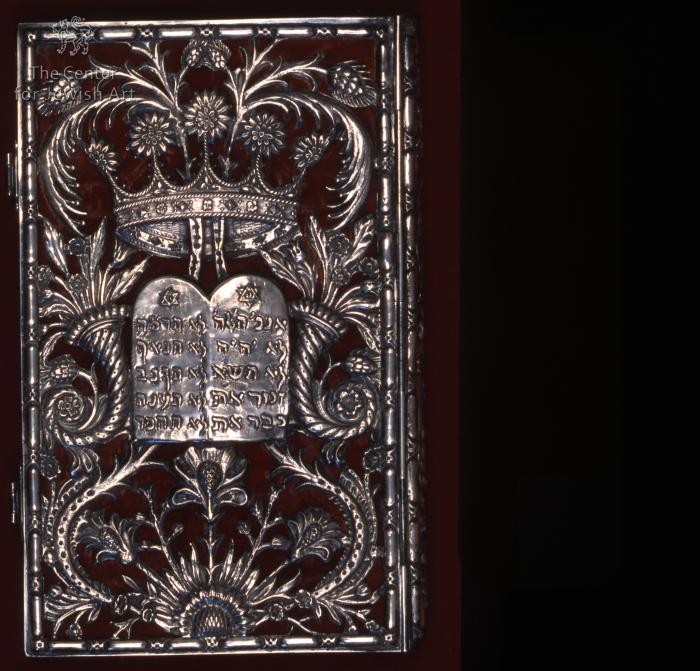
The following description was prepared by William Gross:
The bindings of Jewish books are generally quite simple, but there does exist a tradition, probably among the wealthier section of the population, of binding books in special and elegant ways utilizing a variety of material.
Silver book bindings are one of the most elegant objects of Jewish ritual art. The form is generally copied from Catholic and Orthodox Christian tradition where prayer books were often covered with silver bindings in keeping with the other elegant silver pieces used in the prayer service. As in many other areas of life, Jews emulated some customs from what they saw of their Christian neighbors. Since such a binding was an expensive purchase for an individual, such silver pieces are fairly rare. Their appearance is most widespread in Italy, but examples also exist from Germany, Poland, Ukraine, Austria and even the Ottoman Empire.
More Jewish silver book bindings originate in Italy than in any other area. This is not unusual as many Italian Christian prayer books were covered with similar silver covers as well. A beautiful example of 19th-century silver work in Venice, this large silver binding has Jewish motifs on both sides. The general design is taken from an 18th-century textile pattern, an example of which can be found on a Parochet in the Prague Jewish Museum. This is a good example of how patterns were copied from one medium into another. In this case the delicate textile pattern was copied in pierced silver work, with the addition of the Jewish symbols of the Menorah and the Tablets of the Law.
The book within the binding is neither a rarity nor an expensive print.
Inscription: Ten Commandments



